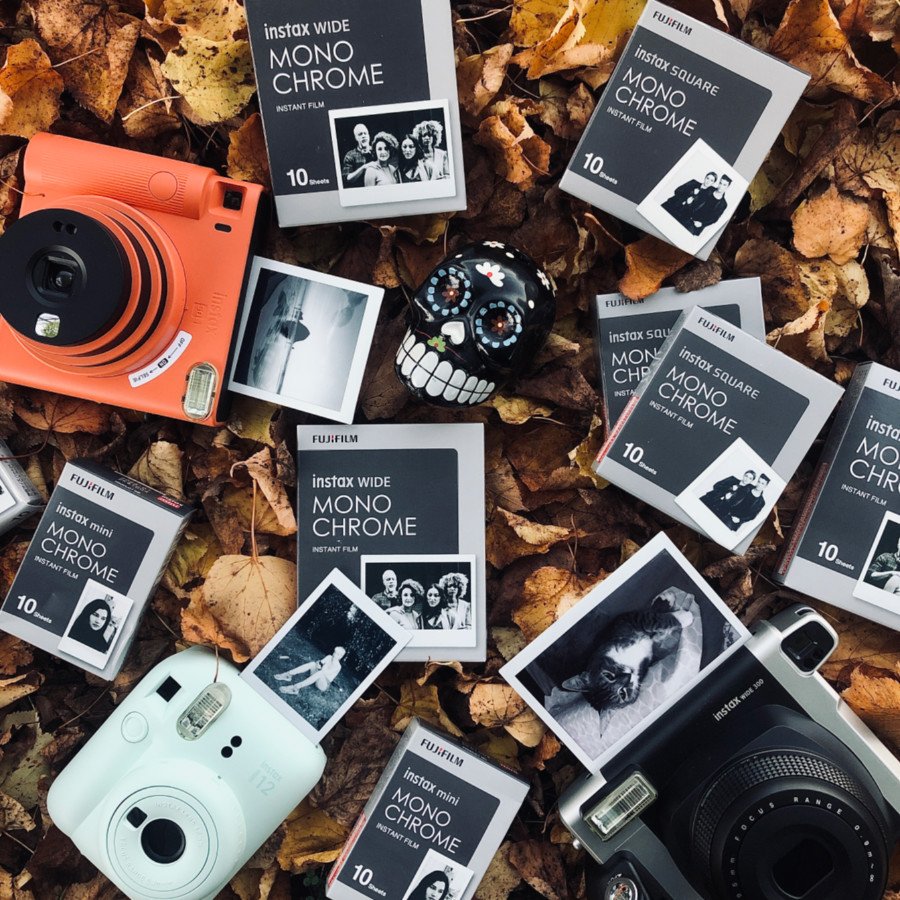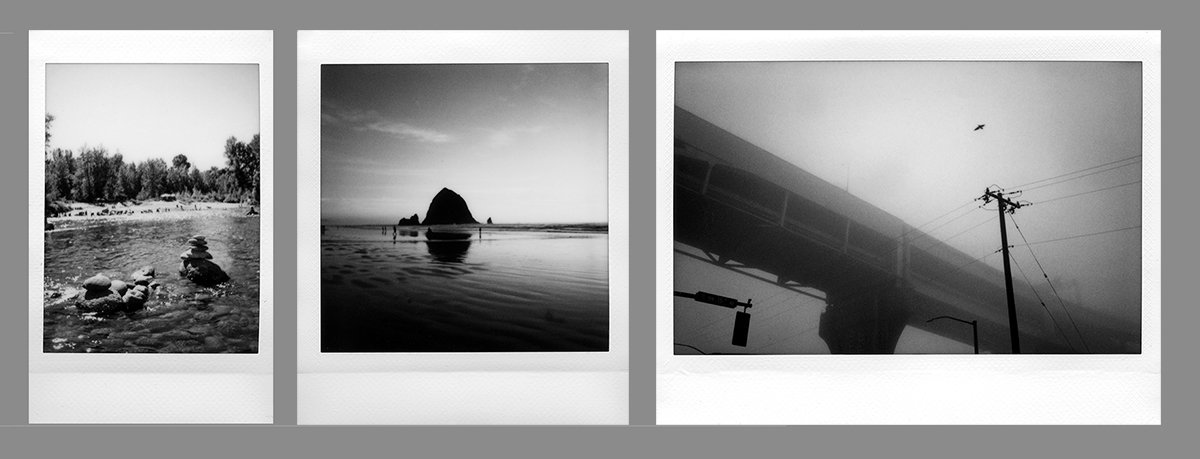Film Friday - June 27th, 2025. Fuji Instax Monochrome Film Review
With this Film Friday review we figured we would take a short dive into the Instax Monochrome line of instant films that Fuji has made available for their Instax line of cameras. A good place for you to start may be our Film Friday reviews for the Fuji Instax Mini Color and Wide Color films, as we lay out the surprisingly long history of Instax film within those reviews. Suffice it to say, Instax color film has been with us a surprisingly long time but the addition of Monochrome only started to happen in 2016.
Fuji Instax Mini was the first of the Instax formats to earn a black and white option, which it did during October of 2016. Instax Wide Monochrome followed just a year later in the fall of 2017. Instax Square Monochrome completed the trifecta in October 2020.
The three Instax Monochrome formats: Mini, Square and Wide.
Across the three formats, Instax Monochrome film differs only by the size of its image; the inherent qualities of the emulsion and the film’s performance is essentially the same. So maybe it makes the most sense to start there.
Instax Monochrome is an ISO 800 black and white instant film. It has that fast 800 film speed which really help this film perform well in most lighting conditions. It seems like Instax cameras have no problems with this film be it a sunny summer day, sunrise or sunset, or out for a night on the town. With the 800 ISO speed you would expect grain and Monochrome has some but you will not notice it unless you go looking for it. This is in part because these formats are on par with the size of medium format negatives and they are not being enlarged at all. The average photographer would find it difficult to hold a medium format negative in hand and notice its film grain. It is not until that negative is scanned or printed (thereby enlarged many several times over) that the magnified grain becomes visible. Since most Instax images are enjoyed as their original, tangible artifacts, the grain of this film does not usually come into play.
Images made with Instax Monochrome are sharp, crisp and have a good amount of contrast. This tends to lead to some wonderfully rich shadows but at the cost of much shadow detail. Similarly the film has clean and crisp highlights but it can be easy to clip those highlights as well. Casual users will be impressed by the sharpness of the images. We would agree that the film is sharp and the higher contrast helps with this. At the same time Instax images are often limited by the cameras they are used in and mileage can vary. Not all Instax cameras are the same and reports have suggested that the cameras of some formats produce sharper images than those of other formats. An example of this can be the Mini Neo 90, an advanced Instax Mini camera, compared to the Instax Wide 300, the generic (and only) camera for the Wide format. The former is known for higher quality images than the latter, which has a reputation for softness at times. This is all to say it is important to remember the qualities of the camera when gauging the qualities of this film. Lately we have been experimenting with an Instax back made by the company Nons that fits Hasselblad. Shooting Instax film with Carl Zeiss lenses has really helped illustrate both how sharp this film is as well as how often that same sharpness is held back by the optics of Fuji Instax cameras.
As the largest of the Instax formats, Instax Wide does the best job of showing off how sharp the film is, even if the Wide cameras are considered to be average at best in terms of sharpness.
Instax Monochrome films take on average of about 90 seconds to develop, dependent upon ambient temperatures. They can process a bit faster if it is warm out and a bit slower in colder weather. Differing temperatures can also have an effect on the final contrast of the image. This 90 second developing time makes Instax Monochrome a good deal faster than Polaroid B&W film with its roughly 5-10 minute developing time.
One last quality of Instax Monochrome film is its very neutral B&W rendering. Early generations of Instax Mini Monochrome were known for having a bit of a purplish cast but that was addressed early on and ever since Monochrome films consistently deliver truly black and white images. This also sets Monochrome film apart from Polaroid B&W film with its slight ivory warm tones. It is worth pointing out though that successive generations of Polaroid B&W film have moved it closer and closer to a strictly black and white image as well so this difference is narrowly yearly.
Putting Instax Monochrome and Polaroid B&W next to one another shows just how similar these films can be, though Polaroid film continues to be more inconsistent in its results. Instax Mini on the left and Polaroid B&W 600 on the right.
We have mostly glossed over it but we suppose the last point to address is the size of the different Instax formats as the size of the image does have a large bearing on the experience of using the film. As you might expect, Instax Mini is the smallest of the three and Instax Wide is the largest. The actual dimensions for the three sizes are as follows:
Instax Mini: 4.6 x 6.2cm image on a 5.4 x 8.6cm picture
Instax Square: 6.2 x 6.2cm image on a 7.2 x 8.6cm picture
Instax Wide: 9.9cm x 6.2cm image on a 10.8 x 8.6cm picture
The height of all three formats is consistent but with varying widths as you progress from Mini to Square to Wide.
Lastly, since Instax Monochrome film comes bundled in plastic cartridges it is worth talking about the recycling of the shells once you have finished all ten exposures. The easiest thing to do is to contact your local recycling department and confirm that they accept High Impact Polystyrene (HIPS). If so, then you can recycle as you would other products. If you live in an area that does not accept HIPS then you can bundle your cartridges up and ship them directly to:
Fujifilm/Burton Center
2605 Highway 72/221 E
Greenwood, SC 29649
As fun as shooting Fuji Instax is, we should all continue to help reduce, reuse and recycle whenever we can.
Fuji Instax Square Monochrome
Fuji has been very proactive in offering Instax users a variety of fun options in regard to film for their cameras. Usually these take the form of interesting or colorful borders to the film, but Monochrome itself we feel is one of the best ways to shake up your Instax habits a bit and inject something new into how you use these cameras.
We have almost every film stock available on the market. Check it out!
If you need an excellent lab for meticulous film developing, topnotch optical prints, traditional darkroom printing and superb film scanning, we’re your lab!
Also, sign up for our weekly newsletter The Loupe and keep your eyes peeled on our social media feeds every Friday when we feature a different film and also offer it at a one day discount of 15% off!

















